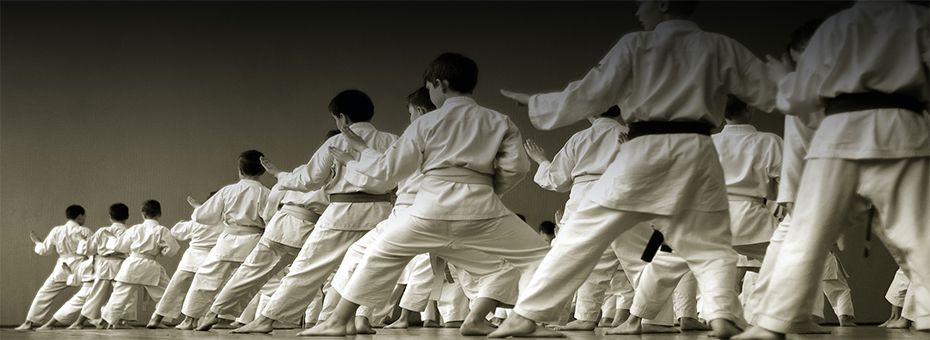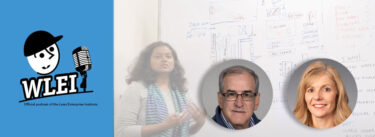From its popular rise in manufacturing in the 1980s, lean thinking has reached nearly every business sector, including service industries and healthcare. But for many organizations and their executives who embrace lean concepts, the results have been at best modest and, for some, complete failures.
The reasons for lean implementation failures are as numerous as the failures— e.g., not suitable to the business setting, isolated applications by frontline staff, lack of true lean principles.To this list I’ll add one that is more fundamental: lean “implementation” implies the provision of a single solution to a process, function, or organization. That solution is often based on Toyota Production System (TPS) tools — flow, pull, poka-yoke, etc. — which were specific Toyota solutions to specific Toyota problems. Although tools can be beneficial, few processes are the same, and, thus, a single solution or toolkit will not entirely match.
What we need instead of implementations are lean deployments. Lean implementations presume solutions and the tools (TPS) to fix them. Deployments apply resources — not solutions, tools, or preconceived ideas — and cultivate habits for improvement and foster a new way of exploring problems and developing solutions. An individual’s own environment guides them to the correct solution, not the other way around. They also may, like Toyota managers and employees decades ago, develop new improvement methods that turn into TPS-like competitive advantages that others seek to emulate.
Kata Creates Deployment Skills
“Kata” refers to daily rituals and forms of practice, such as in martial arts, that turn repetitious movements into an unconscious meta-habit or muscle memory. For a lean deployment, it is a deliberately practiced thinking routine that consists of a learner (Improvement Kata), who is guided by a coach (Coaching Kata.) A second coach frequently observes the learner/coach interaction and offers guidance to the coach.
The Improvement Kata and Coaching Kata give employees the fundamental skills to achieve objectives that connect directly to organizational goals and challenges. The repetitive nature of the learner/coach interaction — called “Starter Kata” — helps to build the muscle memory of a new learner. It also establishes a Coaching Kata infrastructure to make expansion of a lean deployment possible. Kata was a cultural foundation for how Toyota historically achieved many process breakthroughs over time, although it wasn’t documented as such until Mike Rother, who studied Toyota for years, revealed the unique thinking pattern to the business world. For decades, outsiders saw the lean tools and the powerful results of Toyota, but did not really grasp the behavioral force behind them.
Toyota has been living Kata for more than half a century. For everyone else, there is a cultural migration: As Starter Kata is practiced daily (see Starter Kata Questions below), a small group in the organization gradually develops the scientific thinking pattern into the unconscious meta-habit, creating new neural pathways for the way they think, act, and do certain tasks. And while this is only the beginning of Kata, it delivers tangible improvements to the organization — the learners are working to achieve real target conditions that support the improvement goals of the organization.
| Starter Kata Questions |
|---|
|
In my experience as a Kata Coach, I’ve seen learners and coaches begin to detach from the Starter Kata at about six to nine months; they unconsciously exhibit the scientific thinking patterns and behaviors. Their thoughts and actions mirror the Starter Kata, but they don’t rely on a card or their coach to walk them through the routine. As learners advance, from novice to advanced beginner and to competent/proficient,they improve their effectiveness as both learners and as coaches.
Learners iteratively progress toward the target conditions they seek to reach, honing scientific-thinking patterns along the way:
- Go and see: The learner goes to the source of the obstacle and observes, measures, and documents what is occurring with a process or situation, gaining insights into root causes and ways to eliminate them.
- Exploratory experiment: The learner conducts an experiment, introducing a change in the process and observing what happens.
- Testing a hypothesis: The learner conducts an experiment that he or she believes will affect one factor in the process or situation, and expects a positive, measurable change (a hypothesisfor overcoming the obstacle).
At the competent level, individuals have the Kata meta-habits and skills to be a second coach in the organization. As the ranks of coaches and second coaches grows,the organization has organically developed continuous improvement resources andexponentially broadenedthe deployment(ideally, across the entire workforce).
Making of a Meta-Habit
There are no hard and fast rules for when a learner truly detaches from the Starter Kata. Most learners simply begin to rely on meta-habits and their new way of thinking, which is formed by the repetitive pursuit of obstacles that prevent them from reaching a target condition. They intuitively approach every problem with the “skeleton” of the Kata routine, and understand that they are not experimenting to the solution. Learners instead use experiments to find obstacles that prevent them from operating in the target condition. Once obstacles have been identified, eliminated, or circumvented, learners experiment to find another and another, and the path to the target condition becomes clearer and less impeded. They are obstacle-driven rather than solution-driven. For some learners, the meta-habit might emerge after the successful pursuit of multiple target conditions, while for others the maturation may come from a few difficult Kata routines, learning from failures as well as successes.
Coaches are critical gateways for when Learners detach from the Kata routine, watching their progress and grasp of experiments and scientific thinking. The coach/learner conversations around current condition, target condition, obstacles, and experiments become less rigid and forced, and there is more discussion and prioritization of all of the obstacles that prevent the learner from reaching the target condition.
Learners’ approaches to eliminating obstacles also become more targeted and efficient: e.g., better design of experiments prior totesting a hypothesis; faster evaluation of outcomes; and sequentially and more quickly testing of specific hypotheses that will positively change factors in the process and removethe obstacle.
With each correct hypotheses and obstacle removed, learners more efficiently move toward the target condition.
As meta-habits are refined, the scope of a leaner’s problem-solving expands and advances. Target conditions may move out to greater durations and experiments may be less frequent but more complex.
Bigger, Faster Results with Meta-Habits
Organizations are able to achieve exponential results as Kata meta-habits increasingly become more ubiquitous. Lean deployments, however, demand patience. For example, I encourage a deployment that begins with a slow ramp-up and three Kata learners, three Kata coaches, and three Kata second coaches. Most of these initial nine will become proficient, who then take on three Kata learners and three Kata coaches (typically 20 to 25 new Kata learners).
As the deployment progresses, there are multiples of proficient Kata learners and coaches being developed and deployed, and the number of target conditions achieved rapidly spikes upward.
Over time and with the necessary rigor, the Kata-based lean deployment changes the behaviors of everyone and the organizational culture. Most employees develop the meta-habits to unconsciously find and remove obstacles, and they see problem-solving as part of their work, not add-on work. And new, more productive conversations become commonplace for traditional reporting structures (e.g., managers with direct-reports), which brings a laser-like focus to all activities and processes. With dozens of learners repeatedly removing obstacles, reaching target conditions, resolving problems, and capturing new opportunities, the workforce moves the organization closer to its strategic objectives.
Improvement Kata/Coaching Kata
Develop Scientific Thinking, a Foundation of Lean Management in the 21st Century.






Great article, Brandon! I love the focus on lean deployment rather than lean implementation. I’ve found many new Kata learners struggle to move away from the “Project Management” mindset (which is an implementation approach to a known solution). Magic happens when we set up a “challenge” that we don’t know how to achieve but we apply the Kata mindset to systematically achieve multiple next target conditions by overcoming the obstacles.
Great writing! I think that is incredible the results we as an organization can reach with Kata Coaching.
Thanks for sharing.